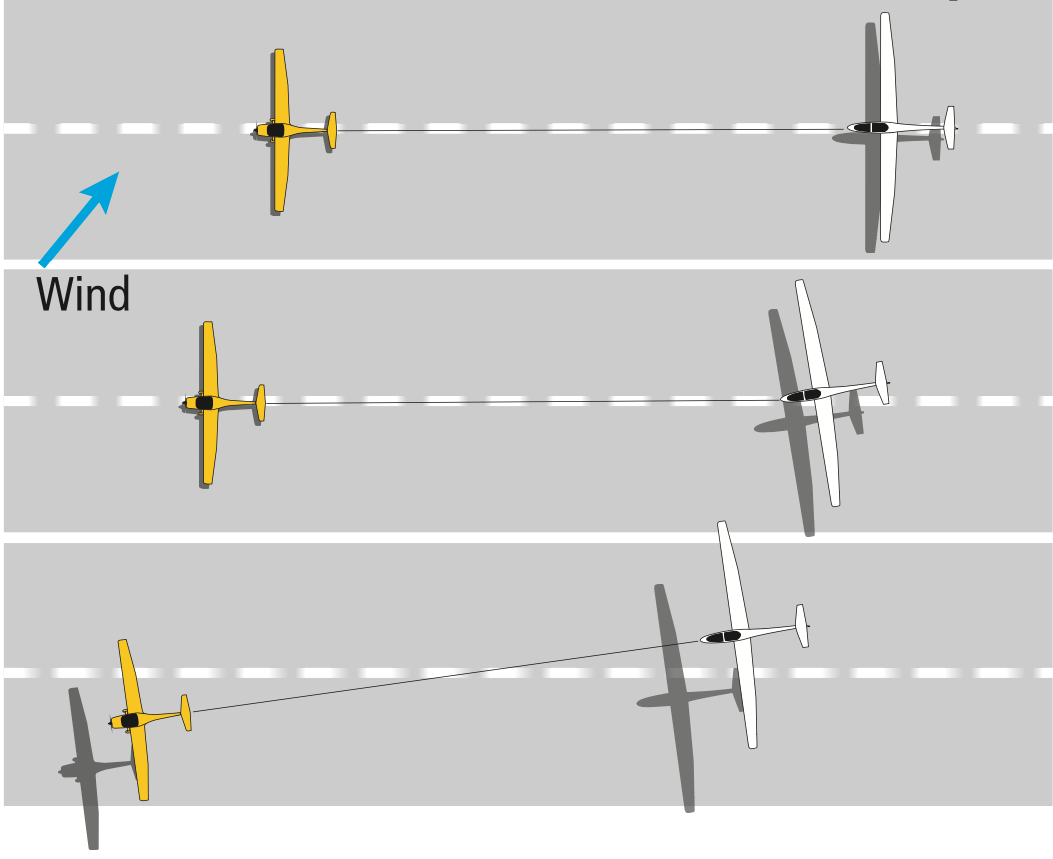4. LESSON 17 - AEROTOW IN CROSSWIND
- During the ground run, you need to apply downwind rudder
- Just after lift- off; either yaw or gently bank the glider into wind to stay directly behind the tug
WEATHER VANE EFFECT
During the initial acceleration you have to consider the weather vane (or weathercock) effect; if the wind is blowing sideways towards your fin, it will try to turn the gliders nose into the wind. You can prevent this with some downwind rudder. For example: if the wind is coming from the left, you will need to apply the right rudder when rolling on the ground. You should already apply the opposite rudder before the first movement to avoid veering into the wind. Lifting off with crossed controls is not a problem.
JUST AFTER LIFT-OFF/DRIFT CORRECTION
There are different schools of thought for technique immediately after leaving the ground. As ever, pilots should adhere to local procedures. If a position directly behind the tug is important - normal on narrow strips - a small amount of bank into wind might be used, controlled with aileron. You can also yaw the glider into wind to stay directly behind the tug. The rudder should gradually be returned to neutral so that normal coordination can be resumed as the tug lifts off.
TUG BECOMES AIRBORNE
When the tug becomes airborne you can take the normal position behind the tug again and stop applying the drift correction. The combination of tug and glider will move as one unit and the tug pilot will correct for drift to follow the desired ground track.


